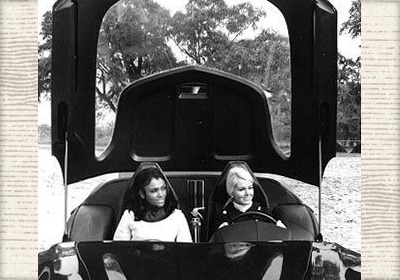Concept Car of the Week: Dodge Charger III (1968)
Fri, 09 Aug 2013In 1968, at the dawn of the muscle car era, the performance-oriented Dodge brand offered a unique range of powerful and iconic models such as the Charger, the Dart and the Coronet. While working in parallel on the Mk II production Charger, designers and engineers created the third in a series of concept cars carrying the same name that aimed to showcase futuristic design and technological innovations to arouse the public and test its reaction.
Dodge general manager Robert B. McCurry stated, "The Charger III is an idea car, or it might better be called an exchange of ideas. This experimental vehicle is our way of showing the public some of the design and engineering concepts that we have developed. From the public, we learned what they would like – or not like – to see in tomorrow's automobile."
Based on some early sketches by Richard Sias for the 1968 production model, the Charger III was clearly targeting the Corvette. The low-slung two-seater had a thick, red body, a thin, wraparound windscreen and a sawed-off kamm tail, which made it the most aerodynamic car produced by the Chrysler Group. The front end of the Charger III is defined by the pronounced volumes above the wheel arches, reminiscent of those on the Chevrolet Astro I, along with pop-up headlamps, a long, chromed smile and twin hood scoops.
By opening the engine service hatch on the left front fender, the fusebox and fluid levels could be checked without the need to raise the hood. The gauges replaced the traditional dipstick and facilitated quick maintenance checks. Located low down in front of the rear wheels are large scoops designed to provide cool air onto the rear brakes to maintain efficiency.
Cleverly engineered into the short rear deck is a three-flap, spoiler-type air brake. Synchronized with the regular braking system, these flaps open to provide additional airfoil effect. Once opened, the large center flap reveals two quick-fill fuel caps to quickly feed the thirsty machine. Finally, a full width rear lamp is integrated at the bottom of the louvered rear panel. The designers tried to remove all ornamental details to preserve the sleek body, which was not an easy task considering the amount of gadgets packed into the car.
Following the trend at the time, a large, jet aircraft-style canopy that opens rearwards at the push of a button replaced conventional doors. While the canopy opens, the twin bucket seats rise 8-inches to ease access onboard. The steering wheel and instrumentation pod also swings away. There was no rear window on the Charger III but a periscope-type rearview mirror on the roof offered wide-angle coverage.
The hood was designed to host any engine – including the mighty 426 Hemi – but although three models of the Charger III were produced, none of them were powered. Two were crushed while the third was used as a shell for one of 'The Flying Dutchman' dragsters.
Purists were glad that Chrysler didn't produce this concept, as it would've been more of a Corvette wannabe than a true Mopar. However, the idea of a powerful two-seater haunted the Dodge studios until it was eventually realized in 1989 as the Dodge Viper RT-10.
Designer Richard Sias
First seen Chicago Auto Show 1968
Height 1,067 mm
Length 4,673 mm
Your author, Flavien Dachet, is a UK-based, French-born car designer. You may know him as the purveyor of KarzNshit, a photo blog that if isn't already in your bookmarks, certainly should be.
By Flavien Dachet

